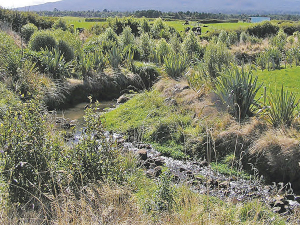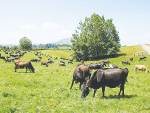OPINION: Wet and wild winter weather can place increased pressure on the banks of waterways, increasing the risk of them being eroded. This can harm water quality and disrupt ecosystems that support biodiversity and water quality.
Some land management practices related to land uses like farming, forestry, roading and horticulture could cause soil erosion and/or a buildup of contaminants such as nitrogen, phosphorus, sediment and pathogens, which are washed into watercourses during heavy rain.
The practices include stock wading in water, poor cowshed effluent treatment, overgrazing, inappropriate fertiliser application, pugging and poor runoff control on cultivated land, and poor management of areas beside waterways. The way farm tracks are made and managed can have the potential to contribute to the contamination of waterbodies.
Water-borne pathogens like giardia and cryptosporidium can lead to serious human health problems, while nitrates and phosphates can potentially create human, animal and environmental health problems.
Good management of the banks of waterways, in particular, can help avoid problems. Wide buffer zones between banks and other activities can reduce problems by stabilising the banks and providing a filter for contaminants washing off the land.
Careful selection of the mix of plant species planted within riparian areas is important.
Shrubs and trees with extensive root systems, which tolerate moist soil conditions and frequent silt deposits, are ideal for stream bank erosion control.
They physically hold the stream banks together and some tree roots also protect the streambed, limiting the scouring effect of running water.
Streamside vegetation provides shade which cools the water, improves its dissolved oxygen levels, helps aquatic life and reduces the risk of algal blooms.
Aquatic invertebrates exhibit a wide range of thermal tolerances. Some grazers (mayflies) are more temperature sensitive than others (snails). Many insects are killed by temperatures only a little greater than 20oC, and snails can survive at about 30oC. Algae are also temperature sensitive, but most filamentous forms can continue growing at high rates up to at least 25oC. During the summer, water temperatures in pasture streams often exceed 20oC, and this could be the reason that many insect species are absent from pasture streams. Pair the loss of these species with an increase in warm, calm weather events that are more common in summer, it is likely that these factors are promoting the algal blooms which can occur around the region.
Suitable plant species beside waterways also provide cover for spawning fish, and food and habitat for nesting and juvenile birds.
Such plantings help aquatic invertebrates become numerous, providing a better food supply for fish and reducing algae. Streamside trees can link areas of native vegetation together, extending habitat for native birds.
Besides these sorts of environmental benefits, riparian planting can also help a farm’s economic bottom line.
Well-designed riparian fencing can be used to improve subdivision, help with mustering, and protect animals from drowning or getting stuck in wet areas. The shelter and shade riparian plantings provide can help with animal production and health.
Improved milk grades are documented where dairy sheds no longer draw water from contaminated streams.
Bala Tikkisetty is a sustainable agriculture advisor technical at Waikato Regional Council. Contact him on 0800 800401 or email This email address is being protected from spambots. You need JavaScript enabled to view it.


















